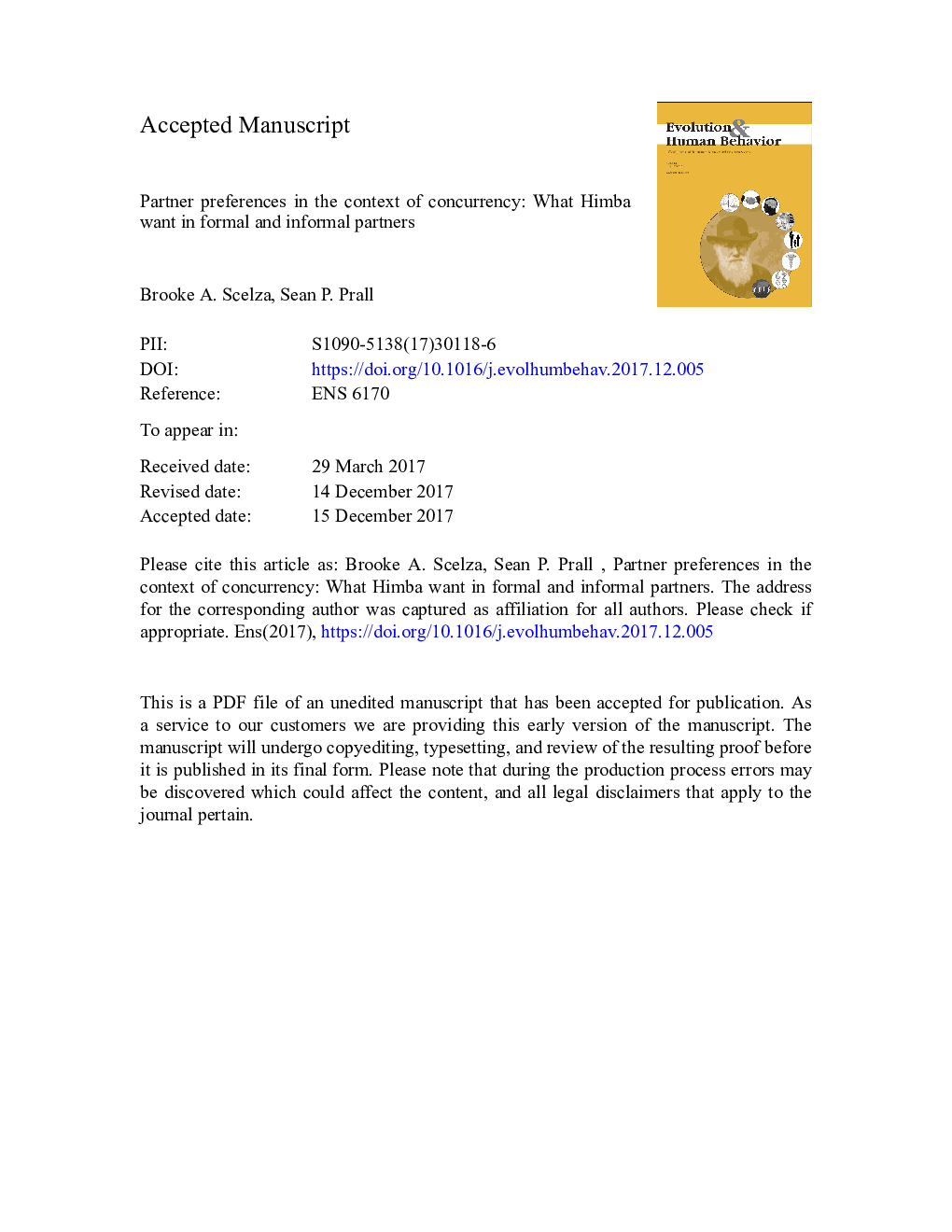| Article ID | Journal | Published Year | Pages | File Type |
|---|---|---|---|---|
| 7316284 | Evolution and Human Behavior | 2018 | 22 Pages |
Abstract
Research on human mate preferences that distinguishes between short- and long-term partners has been conducted mainly in industrialized societies, where multiple mating and concurrent partnerships are stigmatized. However, cross-culturally, there is significant variation in the frequency and the level of acceptance of such relationships. Furthermore, the dichotomy between short- and long-term partnerships does not fully describe the diversity in actual extra-pair behavior, which ranges from single sexual encounters to multi-year love affairs. Here we present another comparison, between formal (marital) and informal (non-marital) partners, which we feel better captures this diversity. We assess the traits that men and women prefer in each type of partner among Himba pastoralists, where concurrent partnerships are common and accepted for both sexes. We situate our findings in relation to three main explanations for concurrent partnerships: dual-mating, trading-up and multiple investors. We find some similarities with the existing literature in the traits that are listed as important, including physical attractiveness, wealth and intelligence. Our evidence suggest that Himba men follow a dual strategy, preferring hard-working wives and attractive girlfriends. Women's preferences align most strongly with a multiple investors explanation, most clearly articulated through their preferences for wealthy husbands and generous boyfriends. Limited support is also found for a dual-mating strategy in women. These findings suggest that local cultural norms and ecologies modulate mate preferences in important ways.
Related Topics
Life Sciences
Agricultural and Biological Sciences
Ecology, Evolution, Behavior and Systematics
Authors
Brooke A. Scelza, Sean P. Prall,
